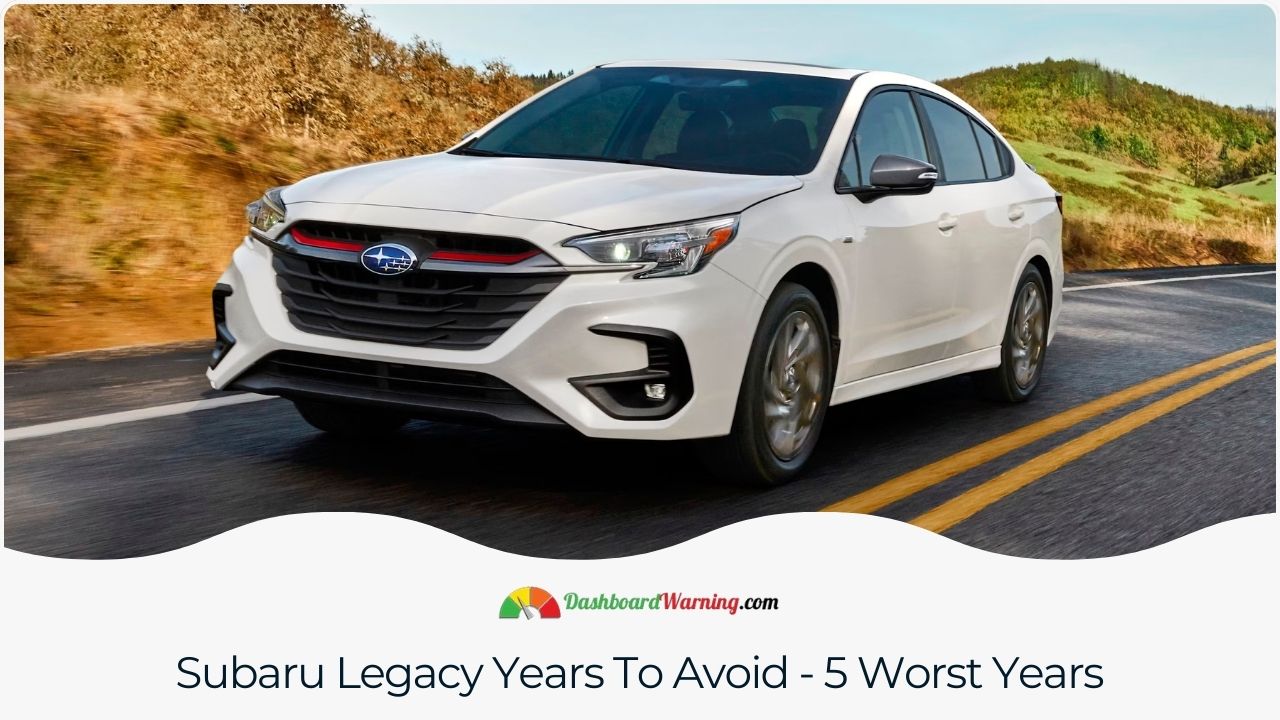The Subaru Legacy has long been a staple in the world of sedans, revered for its all-wheel drive capabilities, reliability, and spacious interior. However, like any vehicle, certain model years have garnered a reputation for problems that make them less desirable among savvy used car buyers. If you’re considering adding a used Subaru Legacy to your garage, it’s imperative to understand which years to approach with caution. This article will provide a comprehensive overview of the Subaru Legacy, focusing on the years to avoid and the reasons behind those recommendations.
When it comes to purchasing a used car, knowledge is power. Buyers often scour forums, consumer reports, and expert reviews to filter through the myriad of options. The Subaru Legacy, while a solid choice overall, has some model years that have become infamous due to specific issues. Identifying these years can help you sidestep potential pitfalls.
Firstly, let’s address the model years that have been widely reported as problematic. One of the most significant years to avoid is the 2015 Legacy. While the 2015 model brought a sleek redesign and an abundance of features, numerous owners reported transmission issues. Specifically, the Continuously Variable Transmission (CVT) in these vehicles was prone to shudder, slipping, and, in some cases, premature failure. Many owners experienced difficulties in acceleration and a frustrating driving experience as a result.
Following the 2015 model, the 2010 Subaru Legacy also appears on the radar of issues. Subaru’s decision to change the design and size of the Legacy in 2010 did not come without complications. Problems with the head gaskets and oil consumption became prevalent, with some models showing symptoms as early as 60,000 miles. This was particularly troublesome for buyers looking for longevity in their used purchases.
If we turn our attention to the earlier models, the 2005 and 2006 Subaru Legacy models have also flagged concerns. These years were notorious for having an array of electrical malfunctions, including failing dashboard lights, malfunctioning windows, and issues with the anti-lock brakes. Such issues not only pose inconvenience but can also lead to costly repairs.
Moreover, the 2009 model is often noted for its insufficient engine performance coupled with a multitude of complaints regarding its subpar overall reliability. While its design was praised, many felt let down by the engine’s performance, leading some owners to express regret over their investment.
So, what should you be looking for when examining potential used Subaru Legacy vehicles? It is crucial to conduct a thorough inspection of the vehicle’s history. Utilize services like Carfax or AutoCheck to glean insights into prior accidents, service records, and ownership history. Pay close attention to whether any of the previous owners reported the issues typical for the model year you are considering.
When test-driving a potential purchase, be mindful of several factors. Listen for unusual noises from the engine and pay close attention to how the transmission shifts. If you are considering a 2015 model, be particularly observant of any shuddering sensations during acceleration or deceleration. A smooth experience is crucial; don’t hesitate to walk away if something feels off.
Additionally, ask the seller about any repairs that have been undertaken. If significant repairs, particularly involving the engine or transmission, have been made, inquire about warranties or guarantees. It is essential to determine if the previous owner has invested in proper maintenance; a well-cared-for vehicle can be far more reliable.
Another pivotal aspect involves the engine itself. Checking the oil consumption is vital, especially in models known for excessive consumption. Consider conducting a “cold start” to check for any smoke or unusual smells from the exhaust, which could indicate engine problems.
Let’s not overlook the importance of obtaining a pre-purchase inspection from a trusted mechanic. Professionals can identify potential issues that may not be immediately visible to the untrained eye. Having a knowledgeable insight can save you from future headaches.
Beyond the years to avoid, it is also important to recognize the strengths of the Subaru Legacy. Models from the mid-2010s onwards generally have enhanced safety features, improved interior quality, and a reputation for better overall reliability, provided you stay clear of the problematic years. Vehicles built after 2015 typically come equipped with modern technology like advanced driver-assistance systems, making them appealing choices for buyers seeking safety and convenience.
In conclusion, while the Subaru Legacy can be a fantastic choice for a used vehicle, being equipped with the knowledge of which years to avoid can prove invaluable. The 2010, 2015, 2005, 2006, and even 2009 models should be approached with caution. Always undertake thorough research, insist on a pre-purchase inspection, and remain vigilant during both the buying process and the ownership experience. With the right diligence, you can enjoy the benefits of Subaru’s signature all-wheel drive and reliability while steering clear of potential pitfalls, ensuring your used Legacy becomes a cherished part of your automotive journey.
